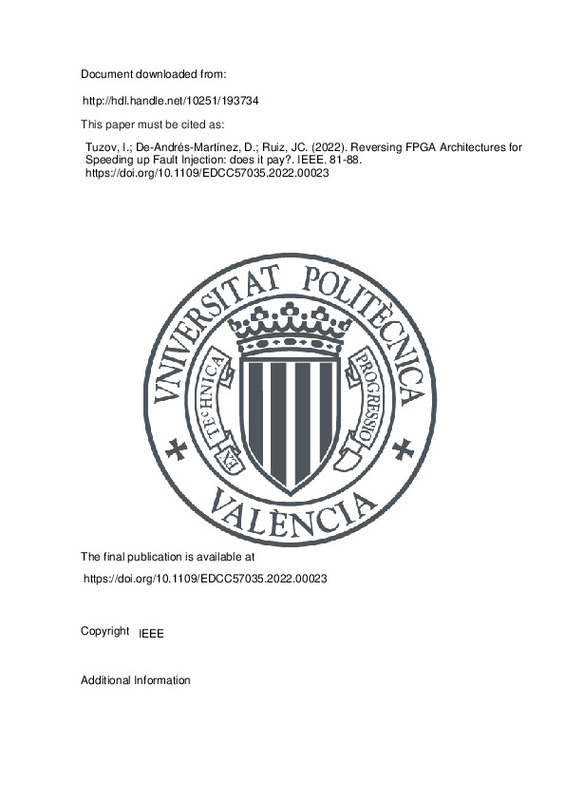JavaScript is disabled for your browser. Some features of this site may not work without it.
Buscar en RiuNet
Listar
Mi cuenta
Estadísticas
Ayuda RiuNet
Admin. UPV
Reversing FPGA Architectures for Speeding up Fault Injection: does it pay?
Mostrar el registro completo del ítem
Tuzov, I.; De-Andrés-Martínez, D.; Ruiz, JC. (2022). Reversing FPGA Architectures for Speeding up Fault Injection: does it pay?. IEEE. 81-88. https://doi.org/10.1109/EDCC57035.2022.00023
Por favor, use este identificador para citar o enlazar este ítem: http://hdl.handle.net/10251/193734
Ficheros en el ítem
Metadatos del ítem
| Título: | Reversing FPGA Architectures for Speeding up Fault Injection: does it pay? | |
| Autor: | ||
| Entidad UPV: |
|
|
| Fecha difusión: |
|
|
| Resumen: |
[EN] Although initially considered for fast system prototyping, Field Programmable Gate Arrays (FPGAs) are gaining interest for implementing final products thanks to their inherent reconfiguration capabilities. As they are ...[+]
|
|
| Palabras clave: |
|
|
| Derechos de uso: | Reserva de todos los derechos | |
| ISBN: |
|
|
| Fuente: |
|
|
| DOI: |
|
|
| Editorial: |
|
|
| Versión del editor: | https://doi.org/10.1109/EDCC57035.2022.00023 | |
| Título del congreso: |
|
|
| Lugar del congreso: |
|
|
| Fecha congreso: |
|
|
| Código del Proyecto: |
|
|
| Agradecimientos: |
|
|
| Tipo: |
|







![[Cerrado]](/themes/UPV/images/candado.png)


